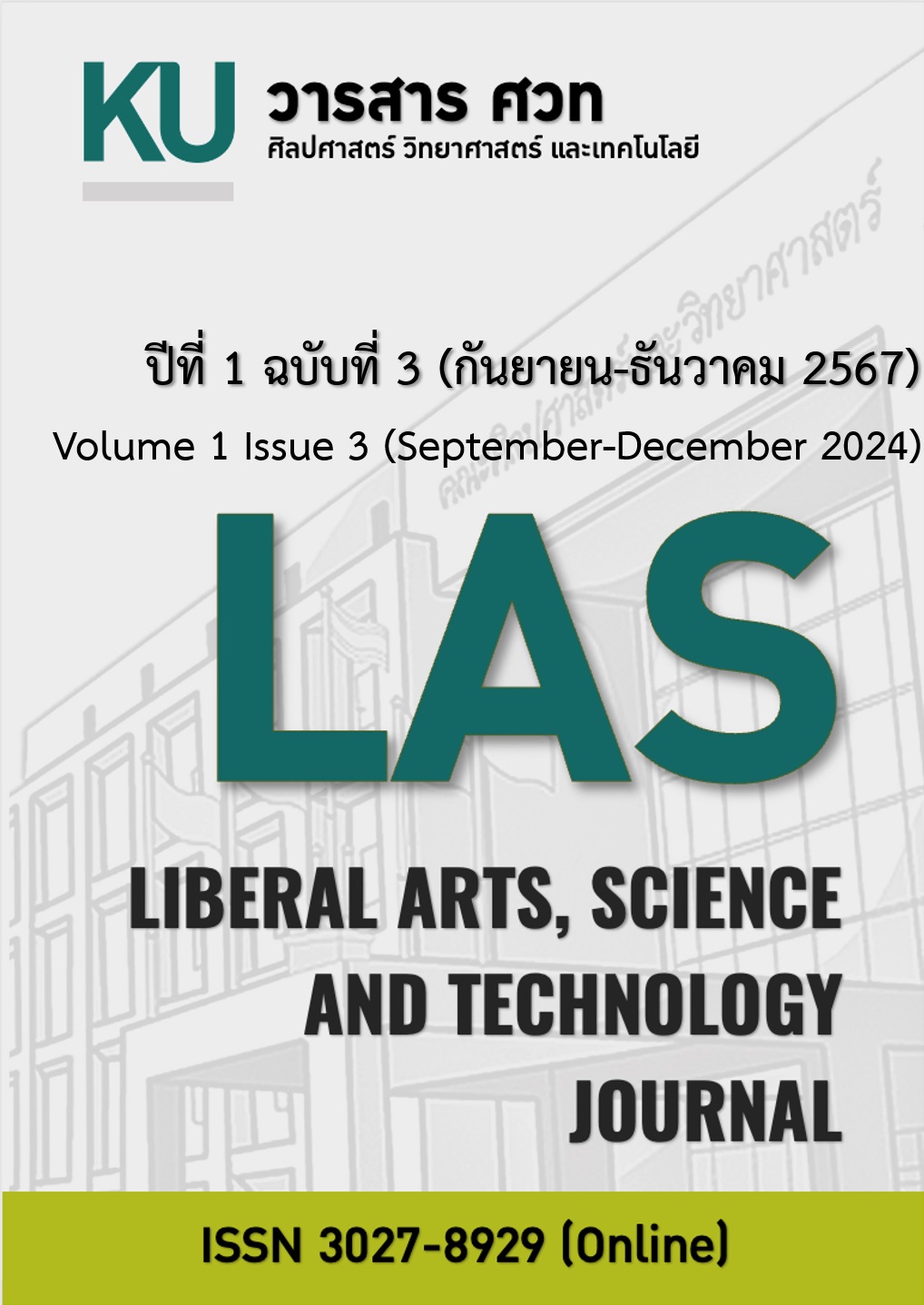Antagonistic screening of Trichoderma spp. against Ganoderma boninense, a causal pathogen of basal stem rot disease in oil palm
Keywords:
Trichoderma spp., Ganoderma orbiforme, Primary screening, BiocontrolAbstract
Ganoderma orbiforme is a fungus that causes basal stem rot disease in oil palms (Elaeis guineensis). It is one of the severe problems affecting oil palm production, an economically important oil crop. The antagonistic fungus Trichoderma is an environmentally friendly biological control microorganism for controlling plant diseases. In this study, eight isolates of Trichoderma spp. were screened for inhibiting the mycelial growth of G. orbiforme K4/2 by the dual culture method. It was found that four isolates of Trichoderma spp. had a percentage of inhibition more significant than 70%, including Trichoderma sp. Z1-02 had the highest percentage of inhibition (73.26%), followed by Trichoderma sp. T1-01 (72.22%), Trichoderma sp. SP1-01 (71.87%) and Trichoderma sp. Z1-01 (71.87%). Examining antifungal metabolites in culture filtrates of Trichoderma spp. isolates SP1-01 and Z1-02 could produce β-1,3- glucanase, one of the cell wall-degrading enzymes. The β-1,3- glucanase activities of isolates SP1-01 and Z1-02 were 0.0175 U/ml and 0.0071 U/ml, respectively.
References
Anothai, J., Intara-anan, S., Samlikamnoed, P., & Chairin, T. (2023). Understanding factors influencing growth and lignocellulosic enzyme of Ganoderma for developing integrated control strategies for basal stem rot disease in oil palm. Tropical plant pathology, 48, 154–162. https://doi.org/10.1007/s40858-022-00551-8
Asad, S. A. (2022). Mechanisms of action and biocontrol potential of Trichoderma against fungal plant diseases -A review. Ecological complexity, 49, 100978. https://doi.org/10.1016/j.ecocom.2021.100978
Ayyandurai, M., Akila, R., Manonmani, K., Harish, S., Mini, M. L., & Vellaikumar, S. (2023). Deciphering the mechanism of Trichoderma spp. Consortia possessing volatile organic compounds and antifungal metabolites in the suppression of Sclerotium rolfsii in groundnut. Physiological and molecular plant pathology, 125, 102005. https://doi.org/10.1016/j.pmpp.2023.102005
Baiyee, B., Ito, S.-I., & Sunpapao, A. (2019). Trichoderma asperellum T1 mediated antifungal activity and induced defense response against leaf spot fungi in lettuce (Lactuca sativa L.). Physiological and molecular plant pathology, 106, 96–101. https://doi.org/10.1016/j.pmpp.2018.12.009
Boukaew, S., Petlamui, W., Srinuanpan, S., Nooprom, K., & Zhang, Z. (2024). Heat stability of Trichoderma asperelloides SKRU-01 culture filtrates: Potential applications for controlling fungal spoilage and AFB1 production in peanuts. International Journal of Food Microbiology, 409, 110477. https://doi.org/10.1016/j.ijfoodmicro.2023.110477
Chairin, T., & Petcharat, V. (2017). Induction of defense responses in longkong fruit (Aglaia dookkoo Griff.) against fruit rot fungi by Metarhizium guizhouense. Biological control, 111, 40–44. http://dx.doi.org/10.1016/j.biocontrol.2017.05.012
Chong, P. K., Rossall, S., & Atong, M. (2009). In Vitro Antimicrobial activity and fungitoxicity of syringic acid, caffeic acid and 4-hydroxybenzoic acid against Ganoderma Boninense. Journal of agricultural science, 1(2). https://www.researchgate.net/publication/41940813
Erazo, J.G., Palacios, S.A., Pastor, N., Giordano, F.D., Rovera, M., Reynoso, M.M., Venisse, J.S., & Torres, A.M. (2021). Biocontrol mechanisms of Trichoderma harzianum ITEM 3636 against peanut brown root rot caused by Fusarium solani RC 386. Biological control, 164, 104774. https://doi.org/10.1016/j.biocontrol.2021.104774
Kaewsalong, N., Songkumarn, P., Duangmal, K., & Dethoup, T. (2019). Synergistic effects of combinations of novel strains of Trichoderma species and Coscinium fenestratum extract in controlling rice dirty panicle. Journal of plant pathology, 101, 367–372. https://doi.org/10.1007/s42161-018-0191-y
Miller, G. L. (1959). Use of Dinitrosalicylic Acid Reagent for Determination of Reducing Sugar. Analytical chemistry, 31, 426–428. http://dx.doi.org/10.1021/ac60147a030
Muniroh, M.S., Nusaibah, S.A., Vadamalai, G., & Siddique, Y. (2019). Proficiency of biocontrol agents as plant growth promoters and hydrolytic enzyme producers in Ganoderma boninense infected oil palm seedlings. Current plant biology, 20, 100116. https://doi.org/10.1016/j.cpb.2019.100116
Onufrak, A. J., Gazis, R., Gwinn, K., Klingeman, W., Sima, K., Oñat, L. I. P., Finnell, A., Givens, S., Chen, C., Holdridge, D. R., & Hadziabdic D. (2024) Potential biological control agents of Geosmithia morbida restrict fungal pathogen growth via mycoparasitism and antibiosis. Biocontrol, 69, 661-674. https://doi.org/10.1007/s10526-024-10277-y
Pascale, A., Vinale, F., Manganiello, G., Nigro, M., Lanzuise, S., Ruocco, M., Marra, R., Lombardi, N., Woo, S.L., & Lorito, M. (2017). Trichoderma and its secondary metabolites improve yield and quality of grapes. Crop protection, 92, 176–181. http://dx.doi.org/10.1016/j.cropro.2016.11.010
Petrisor, C., Paica, A., & Constantinescu, F. (2016). Influence of abiotic factors on in vitro growth of Trichoderma strains. The publishing house of the romanianacademy, 18(1), 11–14. https://www.researchgate.net/publication/313846729
Ruangwong, O.-U., Wonglon, P., Phoka, N., Suwannarach, N., Lumyong, S., Ito, S., & Sunpapao, A. (2021). Biological control activity of Trichoderma asperelloides PSU-P1 against gummy stem blight in muskmelon (Cucumis melo). Physiological and molecular plant pathology, 115, 101663. https://doi.org/10.1016/j.pmpp.2021.101663
Samlikamnoed, P., Anotha,i J., & Chairin, T. (2023). Defense-related enzyme production in oil palm seedlings against basal stem rot pathogen Ganoderma boninense and its biological control by Trichoderma asperellum. Physiological and molecular plant pathology, 128, 102154. https://doi.org/10.1016/j.pmpp.2023.102154
Santiago, K. A. A., Wong, W. C., Goh, Y. K., Tey, S. H., & Ting A. S. Y. (2023). Metabolomics approach in identifying biomarkers from pathogenic Ganoderma boninense involved in early interactions with oil palm host. Physiological and molecular plant pathology, 125, 101980. https://doi.org/10.1016/j.pmpp.2023.101980
Tomah, A. A., Alamer, I. S. A., Li, B., & Zhang, J.-Z. (2020). A new species of Trichoderma and gliotoxin role: A new observation in enhancing biocontrol potential of T. virens against Phytophthora capsici on chili pepper. Biological control, 145, 104261. https://doi.org/10.1016/j.biocontrol.2020.104261
Downloads
Published
How to Cite
Issue
Section
Categories
License
Copyright (c) 2024 ศวท : ศิลปศาสตร์ วิทยาศาสตร์และเทคโนโลยี

This work is licensed under a Creative Commons Attribution-NonCommercial-NoDerivatives 4.0 International License.







